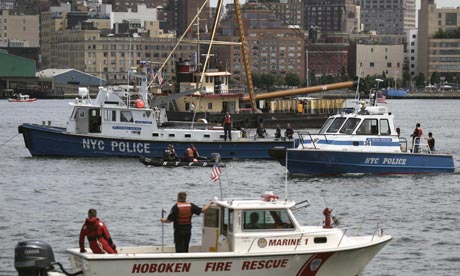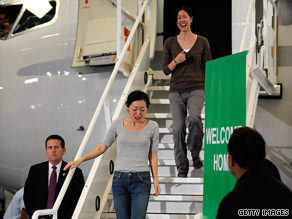
WASHINGTON — Sonia Sotomayor has gained admission to the Marble Palace. Now she has to figure out how the Supreme Court works.
When do you speak up? How do you find your way around a building torn apart by renovation? If someone knocks at the door while the justices are meeting in their private conference room, who answers? (Note to the newest justice: You do.)
After 17 years as a federal judge, Sotomayor knows her way around a courthouse. But her new workplace, filled with quirky customs and rituals, isn't any old court building and new justices, like new colleagues everywhere, want to fit in.
"You don't necessarily want to break the china when you start out," said Christopher Landau, who served as a law clerk to Justice Clarence Thomas after his tumultuous confirmation in 1991.
Sotomayor, 55, became the court's first Hispanic and third woman after taking an oath of office Saturday from Chief Justice John Roberts. She pledged to "do equal right to the poor and to the rich" in a brief ceremony at the court beneath a portrait of legendary Chief Justice John Marshall.
Roberts welcomed his newest colleague to the court and said she could begin work "without delay."
For all the groundbreaking nature of her nomination, the most significant demographic fact about Sotomayor now is that she is the junior justice.
Other than opening the conference room door, Sotomayor will be responsible for taking notes on what the justices decide at those private meetings — including the late September conference where they dispose of a couple thousand appeals — and then reporting the decisions accurately to the court clerk.
It's not rocket science, but it is vital to the court.
"She'll be keeping track of what goes on at conference as she's trying to figure out what's going on at conference," said Margo Schlanger, a University of Michigan law professor who worked for Justice Ruth Bader Ginsburg in Ginsburg's first term in 1993-94.
Sotomayor also will go last when the justices take initial votes on cases. Ginsburg once recalled "a certain impatience, a high premium on brevity when the vote came round to me and there was already a lopsided majority. But coming last does have its heady moments, times when the ninth vote breaks a tie."
The court renovation will force Sotomayor into temporary offices and delay getting her permanent location until the construction is done late next year. Justice Samuel Alito once told an interviewer he often got lost in his first months because of the construction. "I didn't know where anything was, how to get in or how to get out," Alito said.
Sotomayor will have plenty of help — a couple of secretaries, a messenger and four law clerks. If she followed past practice, those clerks already have been hired or have an understanding they will be.
Some new justices have hired at least one law clerk who previously worked at the Supreme Court because it is "easier to get up to speed more quickly," Justice Thomas wrote in his memoir, "My Grandfather's Son."
Deanne Maynard, a partner at the Morrison and Foerster law firm who worked for Justice Stephen Breyer, said an experienced clerk is useful in explaining the court's customs to new justices. "If you want to join an opinion, but you really wish perhaps they might modify part of it slightly, what's the norm in the court?" Maynard said.
The new justice also often reaches out to the others. Thomas wrote about meeting with his eight colleagues, as well as the man he replaced, Justice Thurgood Marshall.
Sometimes friendships develop across ideological lines, like Ginsburg's relationship with Antonin Scalia. They often diverge sharply on the bench, but regularly celebrate New Year's together with their spouses and once even appeared as extras in the same opera production. Their friendship began when both were appeals court judges in Washington.
Among the justices Sotomayor might naturally seek out for guidance are Ginsburg, the court's other woman, and perhaps even Alito, a member of the court's conservative wing. Like Sotomayor, Alito is a former prosecutor and longtime appeals court judge who also graduated from Princeton University and Yale Law School.
Sotomayor will be the second youngest justice, less than half a year older than Roberts. Born in the New York City borough of the Bronx, she'll be the third New Yorker on the court, along with Brooklynite Ginsburg and Scalia, who grew up in Queens.
Sotomayor is not just changing jobs. She also has to move to Washington from New York, where she has lived all her life, except when in college and law school. When Alito arrived in Washington, he stayed with a friend on Capitol Hill; his family remained in New Jersey until the end of the school year.
Other justices have reported that even the smoothest confirmations are exhausting. Alito and Thomas arrived at the court after the term had begun and had to dive right in. "What I needed was a vacation, not another marathon," Thomas said in his book.
It's unlikely Sotomayor will take a long break. The court typically is quiet in the summer, but this year the justices scheduled arguments in a key campaign finance case for Sept. 9. The new term doesn't formally kick off until Oct. 5.
Sotomayor has little more than a month to prepare for that first case, but while it may interrupt the summer break, it also could help her adjust to her new life.
"It allows her to ease into the process as opposed to preparing for two solid weeks of argument," said Landau, now a partner at Kirkland and Ellis in Washington.
That first case could get her thinking about the biggest change anyone faces in becoming a justice, the far-reaching impact of some Supreme Court decisions, said Meir Feder, a partner at the Jones Day firm in New York and former clerk to retired Justice David Souter, whom Sotomayor replaced.
There are few easy questions that come the court's way. "You're not applying settled law," Feder said, "because if it's settled, it shouldn't get there in the first place."

























